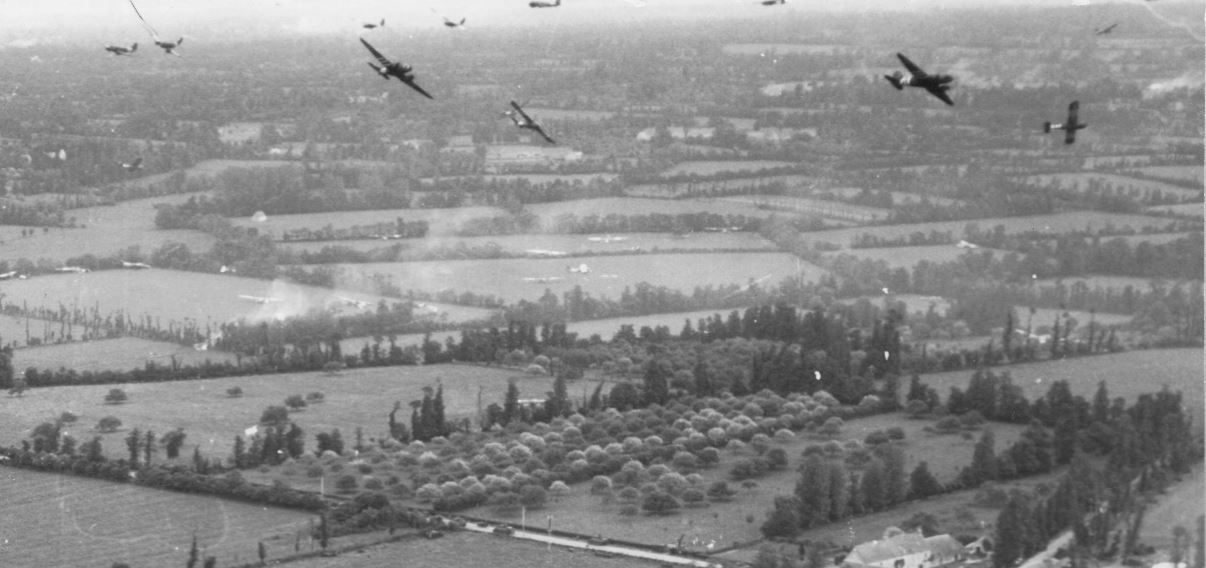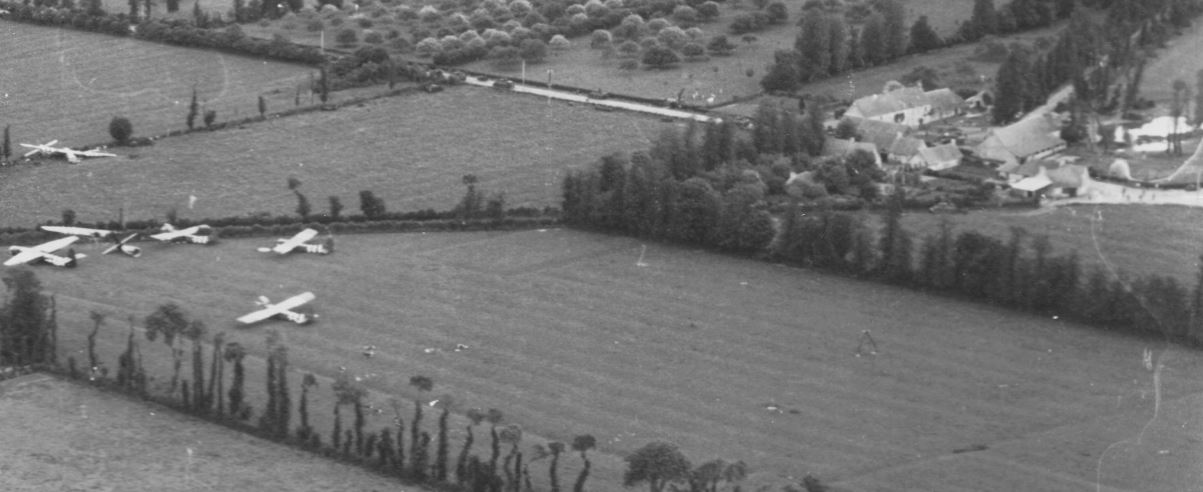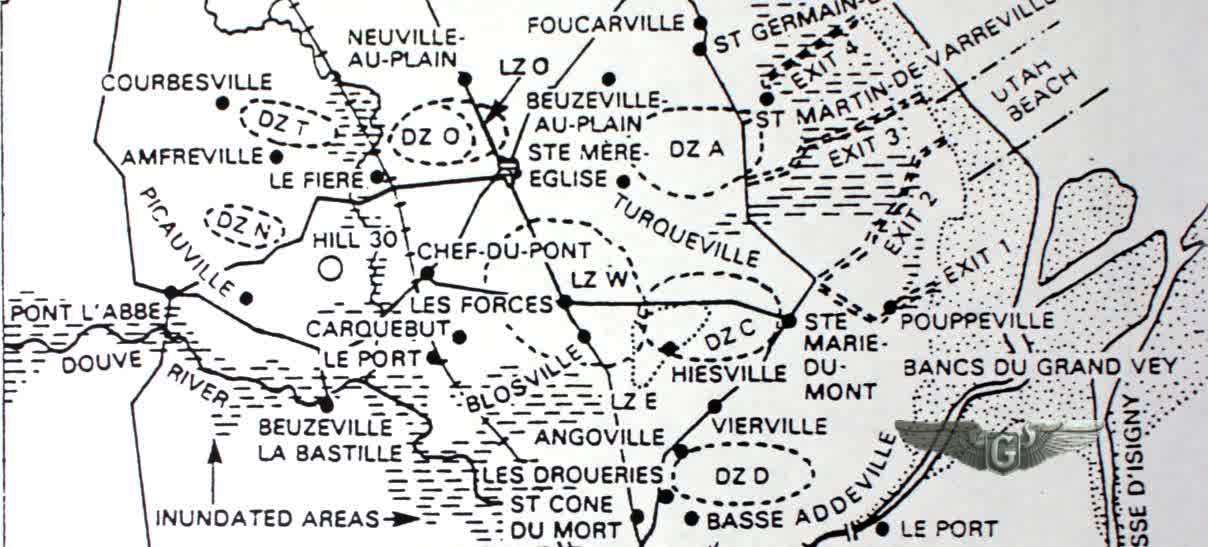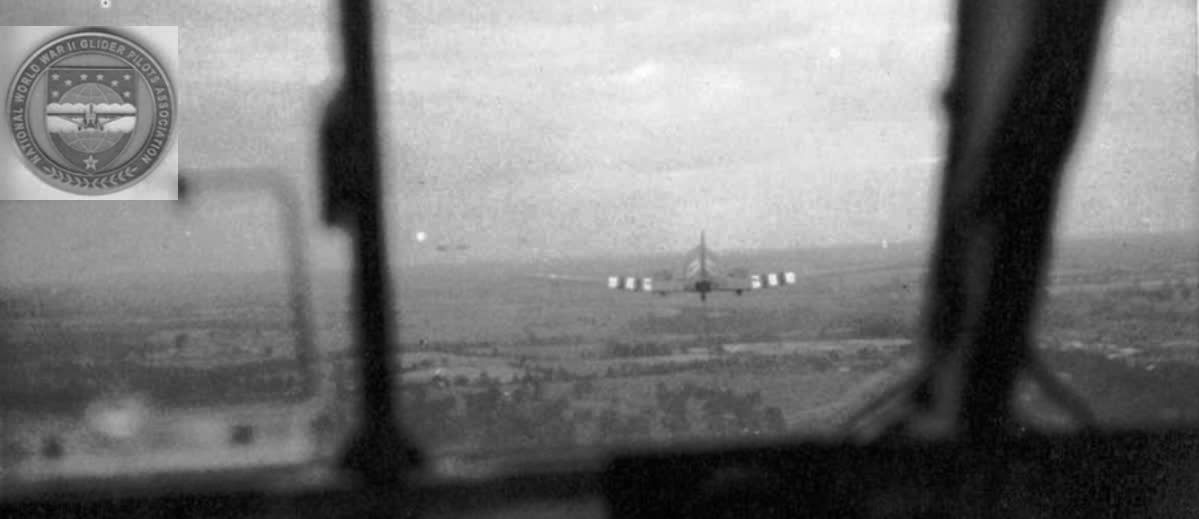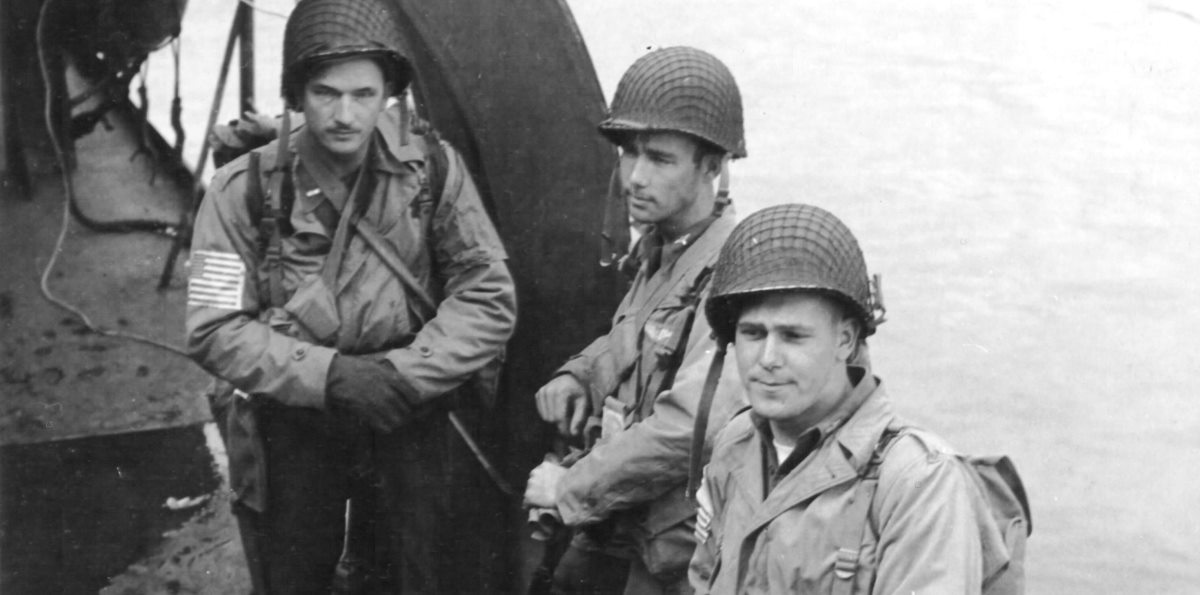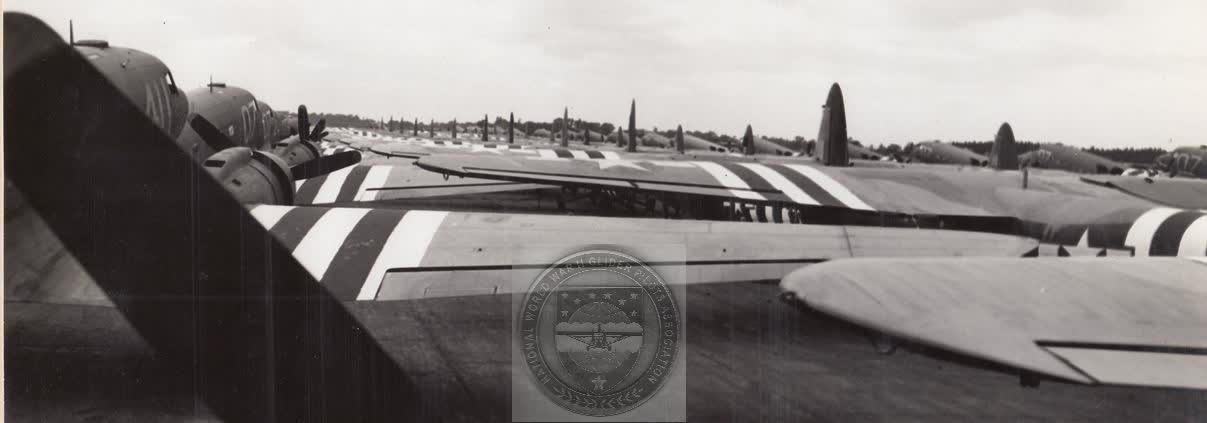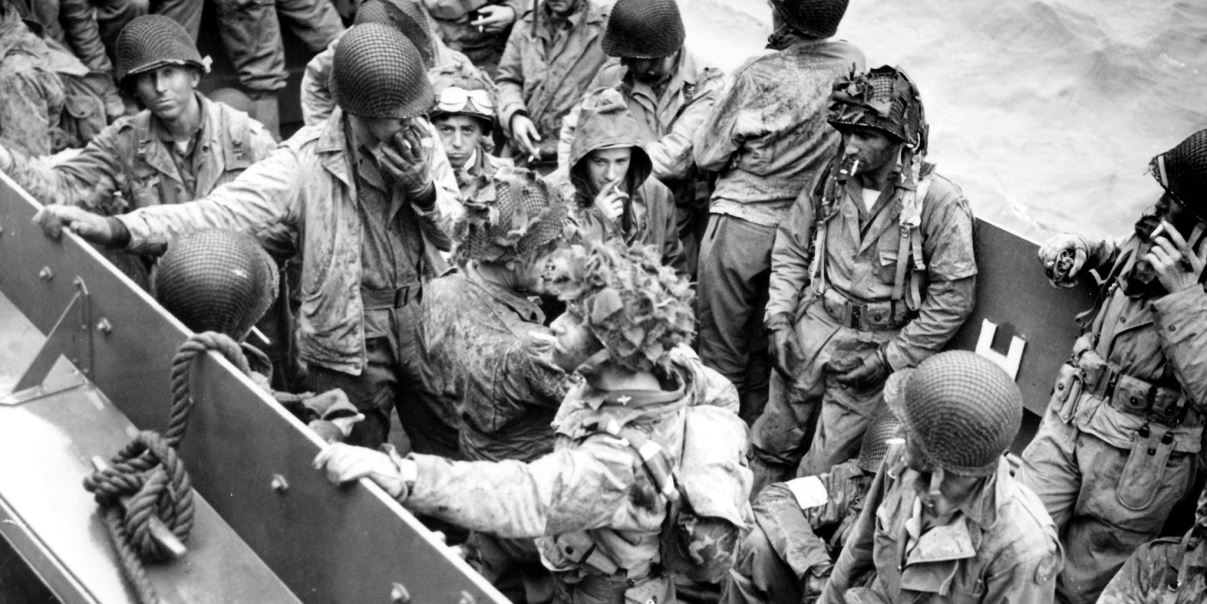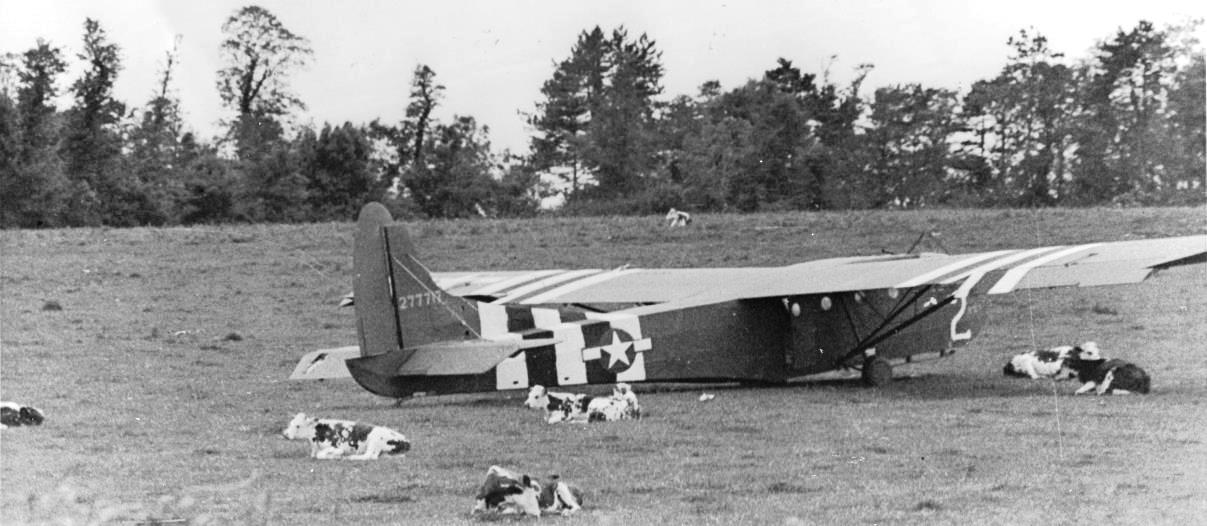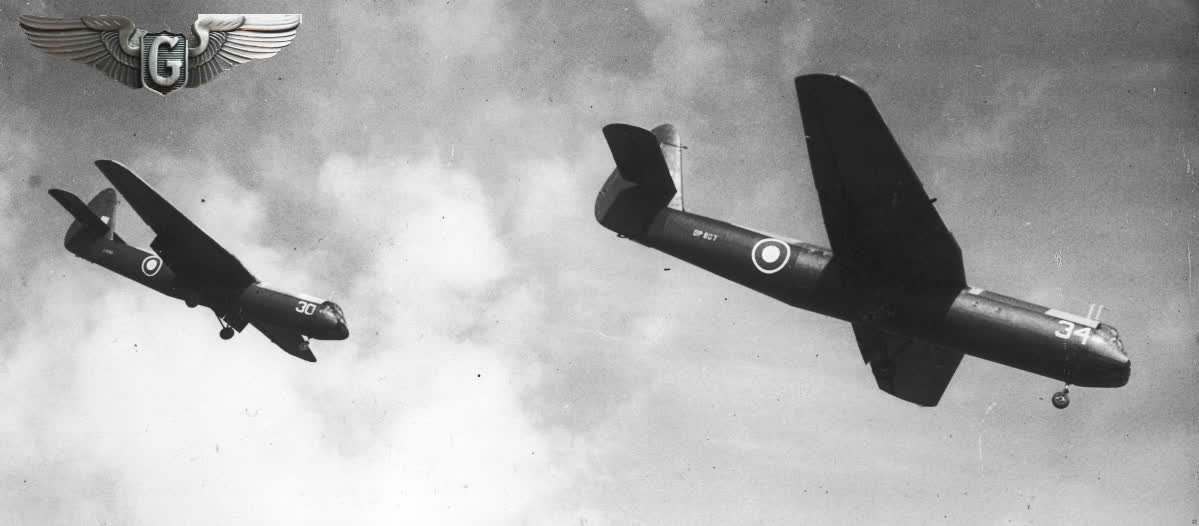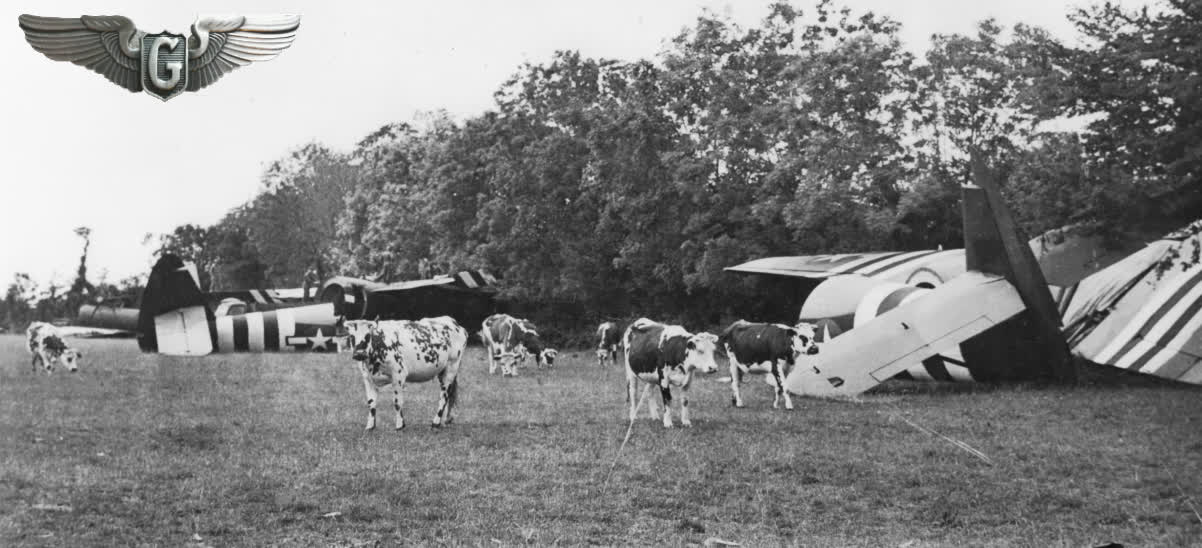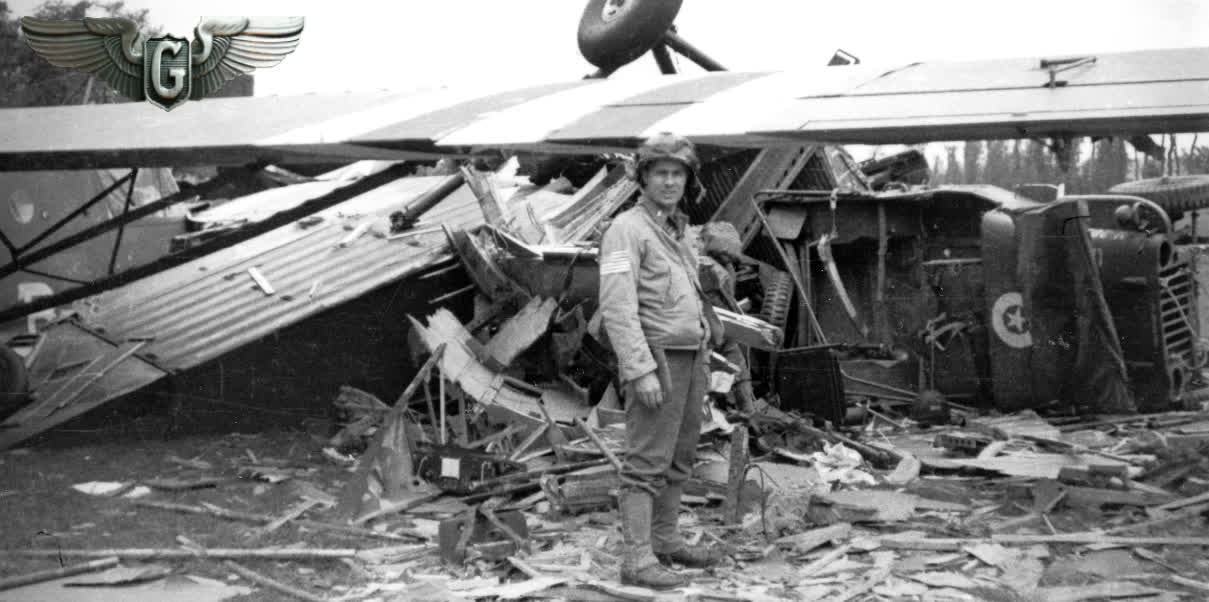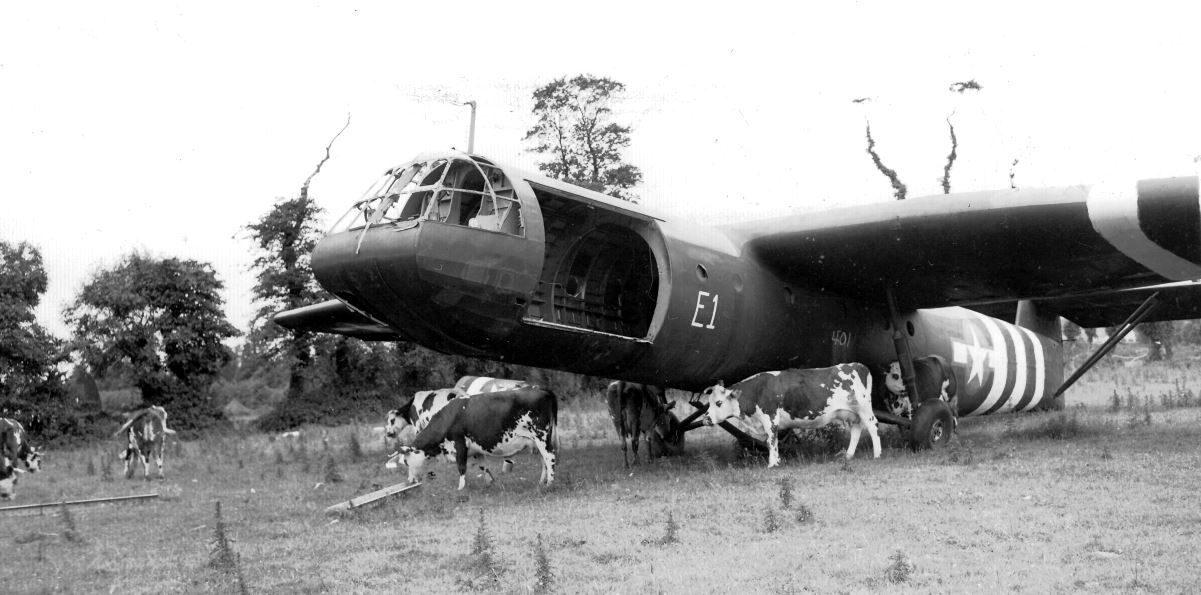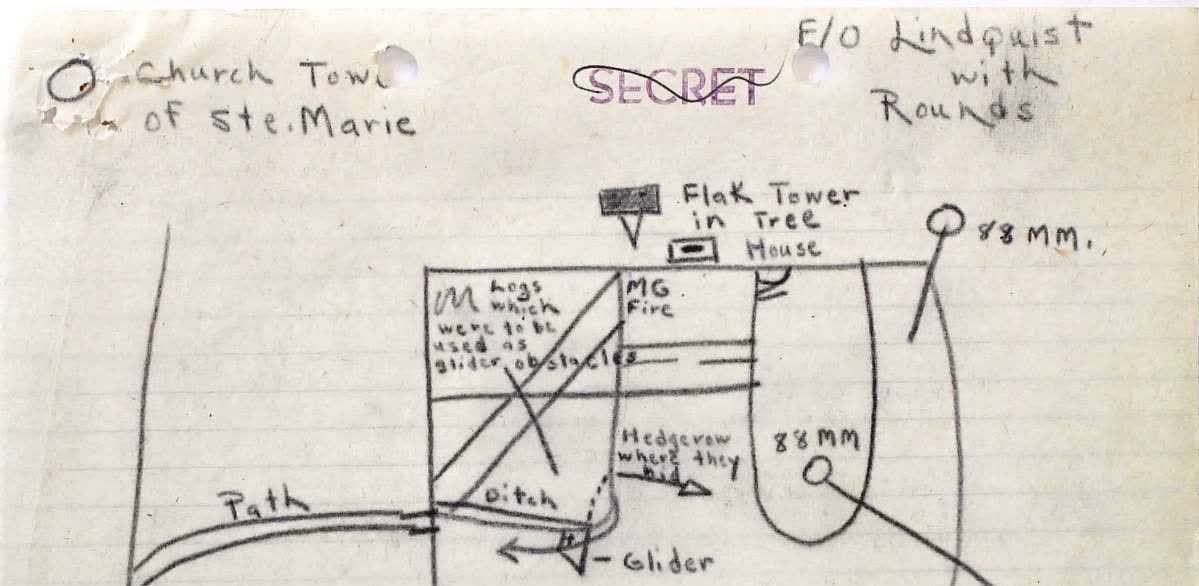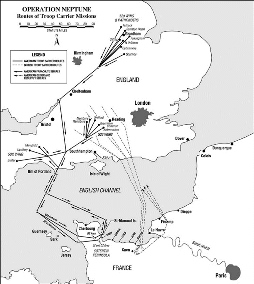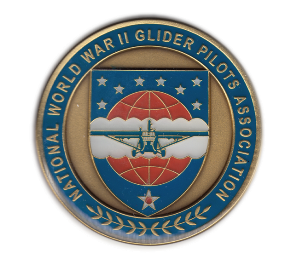National WWII Glider Pilots AssociationLegacy Organization of veterans National WWII Glider Pilots Association. Discover our History, Preserve our Legacy | ||
|
GLIDER PILOT INTERROGATION
Flight Officer Lindquist, with Rounds, jumped out of the glider immediately, its path on the ground was arrested by hitting a ditch in the upper right hand corner of the field. They, with the load, personnel, jumped into the ditch which was about chest-high (four feet) and full of water. There was crossfire from machine guns located at the lower end of the field and from the upper right corner of the fields next to them. Near the machine gun nest at the other end of the field was an 88 mm mortar which was lobbing shells at the glider. Lindquist crawled down the ditch to the hedgerow and concealed himself with others of the party until such time as the firing should decrease in intensity. While they were there waiting, Colonel Bidwell told Rounds to go back and turn off the lights in the glider and then sent Lindquist out to cover Rounds. Lindquist’s M1 was covered with mud and was useless. But he went out to cover rounds, crawling out in the tall grass to the left of the glider. Rounds turned out the lights and left the fuselage just as a mortar got the range and knocked the tail off the glider. They stayed in the thicket (hedgerow) for three or four hours until about thirteen hundred and then Lindquist with an Infantry (Paratroop) major decided to lead the way to the road as the shelling had subsided. Because of the misunderstanding, Lindquist and the major left, thinking that Rounds and the rest of the party would follow. Rounds believed that Lindquist was merely taking another route over to the road which least to Ste. Marie Du Monte. Lindquist and the major dashed across a small open space at the corner of the field and back to the ditch into which the glider had smashed. They waded down this ditch until they crossed the field and then crawled across the remaining field to gain the road. At the road, the major suggested that they go over and take a look at the mortar position which had quieted down for a while and then had been trained on the church tower of Ste Marie so he and Lindquist went down and found American paratroopers had taken the gun and were shelling the town. The major flopped down and went to sleep and Lindquist with an A/B 1st Lt. started to find the A/B command post. The field in which the gun positions were located had several paratroopers and German bodies and there were three or four ammo dumps dug-in and covered with logs and dirt. Lindquist then went back to the road and followed it up to Ste Marie an found a group of glider pilots on the road past the town at a first aid station and after several of them congregated they went on down the road to the beachhead and were taken in had by a control officer who took their names and serial numbers. They waited until arrangements were made to evacuate them. Lindquist recommended a change in weapons, namely a Thompson sub-machine gun or .45 automatic in place of the M1, and also asked that the glider pilots be issued jump jackets to carry their equipment in because the equipment which he was issued was too bulky and there was no time to put it on after landing. 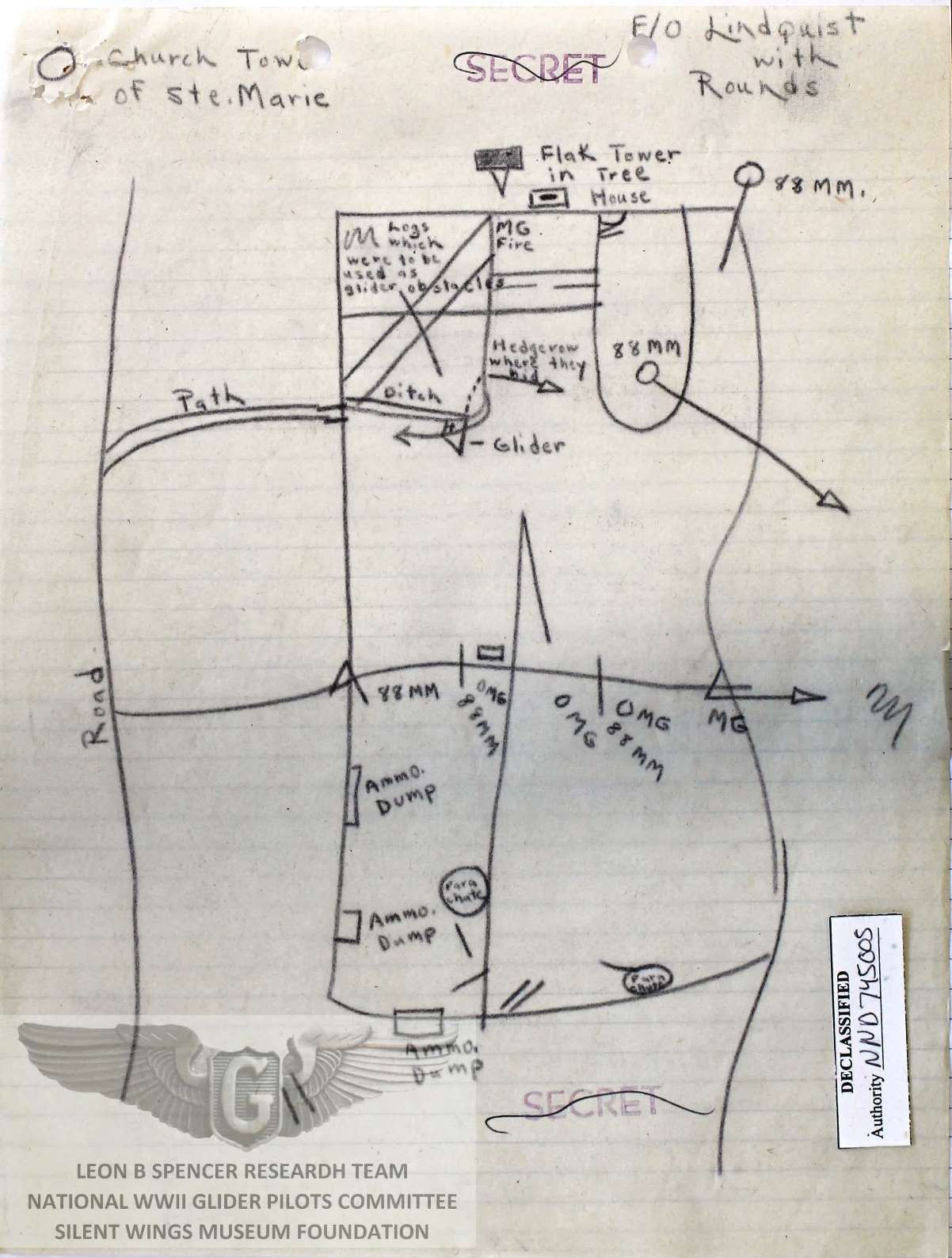 Map drawn by Lindquist for the Intellegence Officer ****************************** 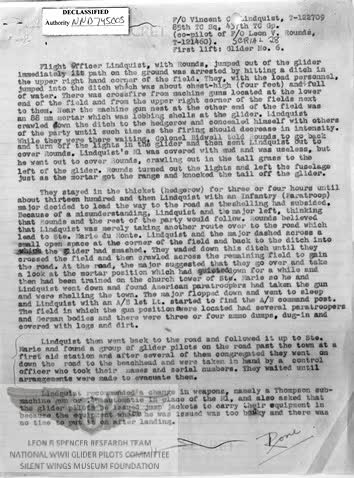
|
|
Mission Chicago 6 June 1944 SERIAL 27 |
Mission Detroit 6 June 1944 SERIAL 28 |
Mission Hackensack 7 June 1944 |
11 Serials - 514 gliders
et Patrick Elie
Preparing for the Elmira Mission, Greenham Common.
Neptune Operation air assault route from England.
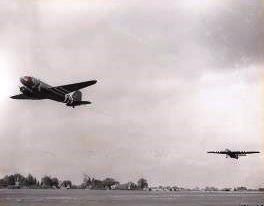
A C-47 and Horsa combination takes off from Greenham Common as part of the Elmira mission. The C-47 pictured here would later crash on a glider mission to Holland.
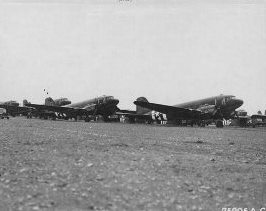
Tow planes and gliders of the 439th Troop Carrier Group are lines up on the runway before the Hackensack mission.
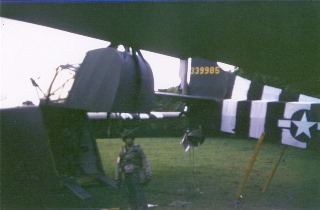
Two gliders of the very first mission in the Normandy fields.

